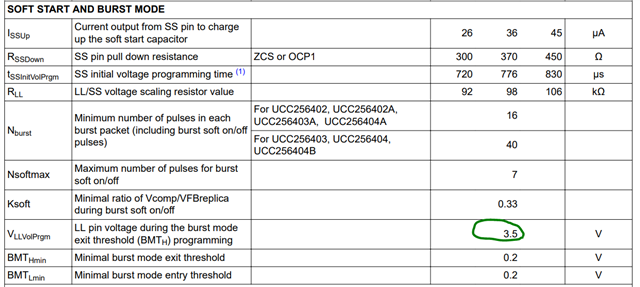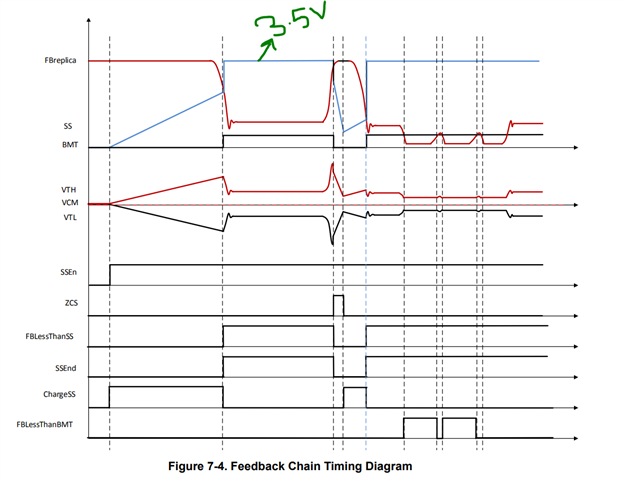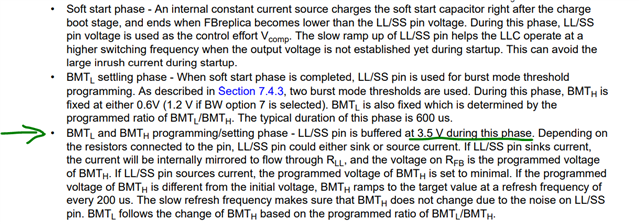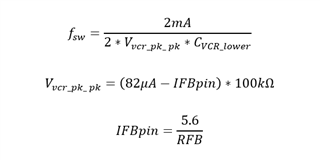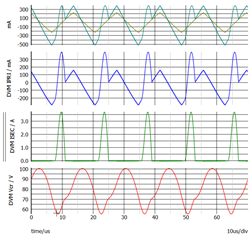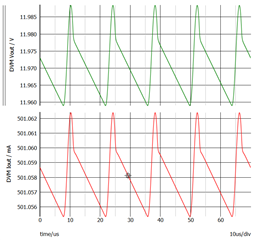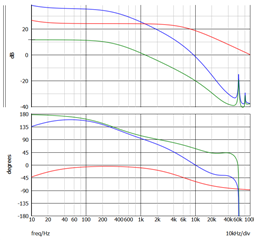Other Parts Discussed in Thread: UCC256402
Hi guys,
I am doing research towards efficiency in DC-DC converters. In this research, I'm designing a 160V-12V LLC converter for low powers (25W maximum) with the UCC256404 controller, I've added a screenshot of my circuit down bellow. My circuit is based on a WEbench generated design. The primary side of the transformer has 20 windings, auxiliary and both secondary windings have 3 windings. I'm monitoring some strange behavior: It seems like everything is switching on and off periodically.
Bellow, I've attached some screenshots of measurements I did. Note the quite large time axis width: it seems like everything is on for 50 ms, and then off again for around 250 ms. In the 50 ms on period, I'm having quite 'normal' behavior with my MOSFET drivers (high frequency switching, I did not include a screenshot of this). I've already looked over the data sheet, and made some experimental changes. From this I can conclude that the controller does not enter fault state (since the off period is not taking 1s, which would be the case for fault state according to data sheet), and that it is not an issue of the controller going into burst mode (I've tried my circuit with Rbw1 = 11 k and Rbw2 = 3.4 k, which should put it into mode 7, which turns off the burst mode). It seems like I'm having some problems with my VCC, since I'm not able to keep it at a constant. I do however not have a clue from where this problem is comming.
First picture is my design, then there are screenshots of different pins with the measured output. Next to that, at the BLK pin, I measure a constant of around 1V (which is expected, since I just input a source voltage of 160V)
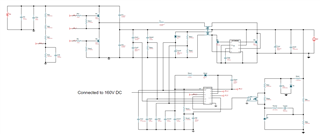
ch1: VCC, ch2: Vout
ch1: RVCC, ch2: Vout
ch1: ISNS, ch2: Vout
ch1: VCR, ch2: Vout
ch1: BW, ch2: Vout
ch1: LL/SS , ch2: Vout
Regards,
Arne


